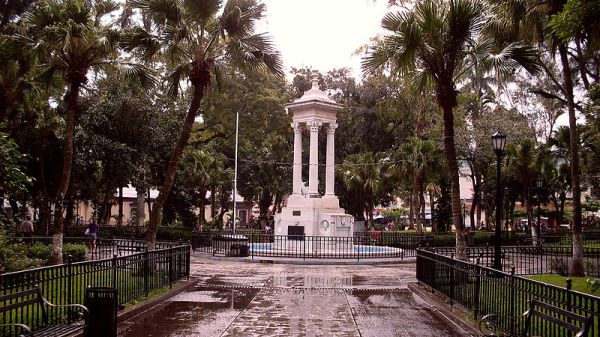Andrew Nickson is an expert on public administration reform, decentralisation, and the reform and regulation of service delivery. He teaches courses in governance and development management.
Last week I was working in El Salvador, a small country the size of Wales that is fast vying with Mexico to become the most dangerous country in the world. I was last there on several occasions during the bloody civil war that wracked the country in the 1980s, shepherding human rights delegations.
Tragically the level of violence under ‘democracy’ is now far greater than at the worst times of the civil war, when right-wing death squads killed trade unionists and peasant activists with impunity. In fact, the death rate during the first six weeks of 2010 is averaging nine killings per day. As in Cuidad Juárez, Mexico, currently the most violent city in the world, most of these are narcotics-related and linked to the mara salvatrucha gangs of latino migrants from El Salvador that emerged in Los Angeles, before they were deported back to their homeland.
But what is particularly distressing about the worsening situation in the metropolitan area around the capital, San Salvador, where most killings take place, is that teenagers now bear the brunt of the violence. This is because the drug lords use youngsters preferentially for trafficking because the penal code was more lenient – handing out lower sentences for under-18s. So on 11 February, the National Congress, in its wisdom, decided to increase the maximum jail term for under-18s from seven to fifteen years – as if that will be make any difference! But this ‘judicial fetishism’ – the naïve belief that deep social problems can be somehow resolved by waving the magic wand of a new law’ – is deeply rooted in the psyche of the Latin American elite.
 Photo credit: Efegé
Photo credit: Efegé
Parque José María San Martín in Santa Tecla, El Salvador
One of the few positive notes in this cauldron of despair comes from the Municipality of Santa Tecla, the fourth largest municipality in the country, located only 15km from the capital city. It is the only place where the death rate has declined markedly over the past few years – in contrast, it is rising in all other major urban centres.
So how has this been achieved? Well, as you would expect there has been a range of traditional programmes to promote social inclusion. But as the Mayor himself, Oscar Ortiz, told me, the most innovative and important ingredient really comes out of left field – increasing ‘public spaces’. Ortiz is a member of the Farabundo Martí National Liberation Front (FMLN), a revolutionary and socialist political party that fought in the civil war and he has been mayor since 2000, re-elected in 2003, 2006 and 2009 – a rare feat in Latin America.
When he took over ten years ago, there were only three small parks and now there are 63. In all of these, there is strict prohibition on carrying arms, which is enforced by armed police, who patrol all plazas and parks. Most of these are tiny by comparison with parks and public spaces in England. But the important lesson is that violence thrives where space is privatised. Where the (local) state genuinely expands ‘public’ space, then violence can be somewhat reduced. It’s no panacea, but we lose sight of the geographical dimension to ‘public policy’ at our peril.
Remember that next time you brave the crowds trying to push their way onto the escalators like sardines at the Bullring Shopping Centre in Birmingham on a Saturday afternoon. Public space has been pared down to a minimum in order to maximise ‘footfall’ at retail outlets. Nowhere to sit and rest, no free culture exhibits to watch, nothing but concrete. Is this the kind of public space that promotes social cohesion?
